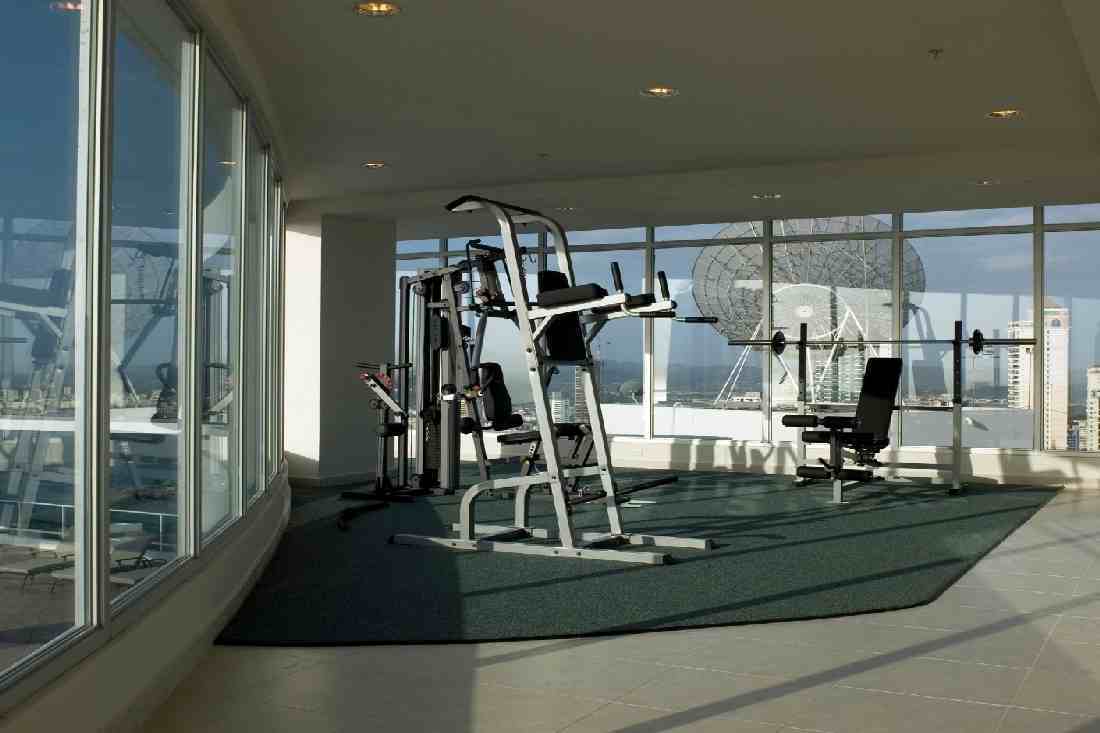Sometimes you might hit a wall while doing exercising. Your gym session might not be that great, but you might have the satisfaction of seeing improvement. This could be due to tempo training. Now the best part of trying tempo training is that it can trigger new kinds of growth. In tempo training, it summarizes the adding of speed or a certain set of tempo into one’s training. This can assist in building more muscles and improving one’s strength or lower one’s body fat.
Most training experts say that it is all about speed, especially at when you are doing the reps. Frankly, it is not simply about what you are doing. It is about how you are doing it. So, the next time you hit the gym and do your strength training, think about how slow or fast you are doing the reps and check if you are using speed to your advantage.
Benefits of Tempo Training
The following are some of the major benefits of tempo training and these are simply beyond hypertrophy of your muscle and burning fat. Some of the major ones are –
- Identifying your weakness while doing the lift
- Improving your technique
- Building eccentric strength (which is good for preventing injury)
Necessity of Tempo Training
- Building muscles
- Losing fat
- Gaining strength
- Improving body composition
- Getting more amount of power
- Reducing the risk of getting injured
- Increasing one’s speed
- Having understand the term ‘time even under tension’
Tempo Training & Time Under Tension (TUT)
Most people aren’t aware of what time under tension is. This is the time when muscle groups are subjected to heavy load while exercising. Keep in mind that at different times when under the tension, it will elicit a very different result. Now if your goal is to develop muscles, especially muscle mass, the rule of thumb is that the TUT you want to do should be for about 30-40 seconds, irrespective of the number of the reps you are going to do.
But sometimes you goal might be to reduce the unwanted fat. In that case, you really need to try doing the TUT for about 40-65 seconds.
How Should Temp Training Look Like Or Be?
You can break down the tempo training into four separate parts. Each of them is different and must be done at different time intervals which concentrate on different parts of the body.
- The first is doing the eccentric component. This is nothing but concentrating on the lowering part where we control the weight against gravity. A perfect example of this exercise is the downward phase done in a bench press movement.
- The second involves a pause in the stretched position of the movement. Here it means putting a pause right at the bottom of a squat position. One best tip that most exercising experts provide is that this must be followed, unless or until you are training specifically for strength.
- The third involves in the sequence which is related to the concentric part. This is the most common part that individuals often think of. Frankly, this part of the movement is the lifting phase. So, it involves working against gravity for lifting weight. One perfect example would be pulling up a deadlift.
- Now the fourth one represents the contracted or shortened part of the movement which is paused. Here the exercise involves in various pulling movements like lat-pulls or rows.
So, now you must know that there is the correct way of doing tempo training and this simply depends on your entire training goal.
Doing Tempo Training for Losing Fat
Sometimes, your ideal goal is to reduce fat and that too within a stipulated time. This is applicable only when you are under tension and also when you are doing weight training sets for about 45-75 seconds each day. Here a simple exercise means that you must do 15 squats in your program. For targeting fat loss, you really need to have a tempo of about 3010 and this can easily give you with a TUT of about 60 seconds.
Keep in mind that this the maximum range that you really need to achieve. Sometimes, this might seem like three seconds for the lowering phase, followed by no pause and then one second up, which is at the top, so that it can take about 4-6 seconds to complete the given repetition. In addition, you need to multiply the given exercise with 15 reps and ultimately you get 60 seconds to do this exercise.
Temp Training for Muscle Mass
It might be that your goal is to develop muscle mass. This means that you really must aim for a set which simply last for about 35-45 seconds. Another thing you must keep in mind is that training to get good muscles would fall under the smaller rep range. So, it simply means that you can have more longer time working out under the tension.
Let’s take an example. Just imagine you are training for five to six reps in the squat position. Even if you use the tempo 4020. So, this simply means that it can take about six seconds for do one rep and about 30 seconds for completing a set and about 35-45 seconds on the window.
Among your human body parts, the muscle is one which is made of various kinds of muscle fibres. This might be something that you really can experiment with various kinds of TUT and see which one works best for you as well your goals. In addition, you might have to simply know that this kind of training won’t be that easy and get to your ahead first. It is very much demanding for the body but when you really need to do, you must do it to refresh from the normal resistance training routine. Also, you can even try the tempo training and see that it is worth something to explore. Plus, it provides some of the best benefits irrespective of your goal.
Rules to Follow While Doing Tempo Exercising
Rule -1: Make sure to count the tempo of exercises
By varying the tempo of the rest periods and lifting phases, it will provide new stimulus to the body and even help in adapting. An average person present in the gym won’t pay any kind of attention to the tempo and allow gravity to do the work for them. They allow the weight to fall and simply use the momentum to lift. Somewhat this isn’t an ideal thing.
Rather than that, you need to take control of the cadence by raising and lowering the weights. This can provide a more effective stimulus for the body to focus and event to adapt. Keep in mind that a typical tempo especially for novices would be lower than the usual weight, which is done on a four or five second count. Make sure to raise the weight immediately by taking one second. So, if you are doing squat, try to lower yourself by keeping yourself under control and taking four seconds for completing the contraction. Immediately after that, drive your body towards a standing position as soon as possible in about one second.
Frankly, this tempo will be written as 4010. Here the four stands for the down or eccentric phase. The zero will be for the pause right at the bottom (in case there aren’t any pause). The one is for the concentric or upward phase and the second zero is for the pause right at the top (here there is no pause).
Now this tempo is applicable for various kinds of stimulus, right from the typical 1010 tempo (where 1 second down and one second up) that are done in the gyms worldwide. Take for example, if you are doing ten reps of squats. This is done using 60 kg somewhat at 4010 tempo and will take about 50 seconds for completion. Now each of the rep will take about five to six seconds, while the 1010 tempo of the same weight and reps will take about 20 seconds, where each of the rep will take somewhat 2 seconds. These thirty seconds is somewhat a huge difference especially when the muscles are exposed to the given weight.
Furthermore, longer tempos will end up in applying more amount of metabolic stress. It means that the 4010 tempo will help in gaining more motor control, build required muscles and improve the connective tissues. Frankly, shorter tempos like the 1010 will need heavy amount of load, which is about 85% of the maximum lift. Now these are geared for building strength and even there are neurological efficiency which can be achieved by applying a lot of mechanical stress.
Rule – 2: Speed at which you train the lifts dictating the method how your body adapts
Now if you can’t control the repetition speed, you won’t be able to create adaptation, which means no results. For example, a short, 3-week study that compared the effect of bench press training using an explosive tempo with a bench press program that allowed trainees to self-select tempo found that the fast tempo group increased the maximal bench press by twenty percent. The other group that self-selected lifting speed did not gain ANY strength.
A second study perfectly illustrates how lifting speed dictates body composition results. Researchers found that compared to a leg extension protocol that used a 1010 tempo, a 6060 tempo produced much greater protein synthesis. The muscle-building effect increased three-fold at 24 hours after training, indicating muscle damage. The 1-second tempo was superior for increasing neural drive to trigger increases in strength.
Rule – 3: Manipulating the tempo for losing body fat
This can be favored by anaerobic energy adaptations. When you are training with various tempos, you are bound to realize that it is one of the best tools for losing body fat by increasing oxygen using post-workout and enhancing the metabolic stress experienced by the body. For example, study was conducted, and it clearly stated that training for a longer tempo of 4 seconds down and 1 second up burned more calories and produced more excess post exercise oxygen consumption (EPOC) than a tempo of 1.5 seconds for both the up and down phases.
Frankly, It is not surprising that the 4010 tempo required a lot of energy as the participants took more time under the weight. However, it reminds us that a simple way to burn more energy during and after working out is to mix up tempo.
Rule – 4: Try to vary the temp for increasing the lean muscle and mass
Even though explosive tempos can produce a significant amount of lactate buildup, this is even associated with huge growth of hormone response and even recruits the big threshold of fast-twitch muscle fibers which gives a good amount of muscle adaptations.
For example, a study was conducted and it found out that blood lactate buildup was significantly greater when men did 3 sets of 8 reps explosively, along with the loads ranging from 60 to 70 percent of the 1RM, compared to the ones who were doing a moderate and at slow lifting speed.
Explosive tempos are appropriate for experienced trainees to recruit the most powerful fibers for strength and hypertrophy. Be sure to develop a solid base before going ballistic to ensure you have strong connective tissue to handle explosive loads.
Wrapping Up
Doing good amount of tempo exercise is great. It helps in making your body stronger and even keeps your mind active. Not many individuals are aware of the significance tempo training provides. It indeed does help to remain healthy without making any kind of compromise in terms of health or getting unwanted diseases. Give it a try as it is not easy but is sure worth the effort.




